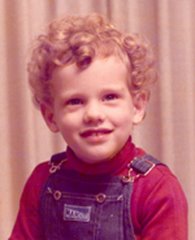The Witch's Boy
by Michael Gruber
Recommended Age: 12+
 What begins as a seemingly whimsical tale grows into a surprisingly deep and far-flung story. It begins when a forest witch adopts an astonishingly ugly foundling. This immediately puts the demands of her craft in conflict against the requirements of motherhood. Out of this conflict grows a chain of events that, in retrospect, seem inevitable: a chain of events in which the boy turns out all wrong...and finally, after many sorrows, turns out all right.
What begins as a seemingly whimsical tale grows into a surprisingly deep and far-flung story. It begins when a forest witch adopts an astonishingly ugly foundling. This immediately puts the demands of her craft in conflict against the requirements of motherhood. Out of this conflict grows a chain of events that, in retrospect, seem inevitable: a chain of events in which the boy turns out all wrong...and finally, after many sorrows, turns out all right.One of the things that sets this book apart from the run-of-the-mill magical kids' book is the earthy, flesh-and-blood realism of its characters: a realism of personality and point-of-view that survives despite the fact that they include a talking bear, a cat transformed into a man, and a host of familiar figures out of Mother Goose and the Brothers Grimm. For this story contains a series of tales-within-the-tale: classic fairy tales retold and reimagined from a different point of view. And surprisingly or not, the overall story is yet another revisionist fairy tale, or perhaps a blending of two or three such into one fully satisfying plot.
What, you might ask, is the "different point of view" of these "revisionist fairy tales"? Partly it seems to be the skeptical point of view that reasons, "Things don't work out in the real world that way. If there be a kernel of truth in this fairy tale, it should come out differently." In this way, the stories of Goldilocks and the Three Bears, Cinderella, Snow White, and Sleeping Beauty are transformed. But modern-day realism isn't the only factor involved. A feminist thread is also woven in: for example, how tragic that the Sleeping Beauty was enslaved to love, and had to give up her hundred-year sleep to endure the pains of childbirth, loss, and old age!
 There is another and more important thread, but I am almost afraid to mention it. The only thing for it is simply to blurt it out: This book takes witchcraft seriously. It doesn't merely create an internally consistent fantasy world for its own brand of magic to work in. Rather, it imports the real thing - the Wiccan worldview - and puts it in the place normally occupied by silly-awful, storybook magic. It chucks out the Mother Goose caricature of witches as cackling creatures who cook children for dinner and fly on broomsticks, and replaces it with the real thing - complete with references to earth-goddess spirituality, the pattern of nature, and a table grace that would hardly embarrass a modern-day Pagan.
There is another and more important thread, but I am almost afraid to mention it. The only thing for it is simply to blurt it out: This book takes witchcraft seriously. It doesn't merely create an internally consistent fantasy world for its own brand of magic to work in. Rather, it imports the real thing - the Wiccan worldview - and puts it in the place normally occupied by silly-awful, storybook magic. It chucks out the Mother Goose caricature of witches as cackling creatures who cook children for dinner and fly on broomsticks, and replaces it with the real thing - complete with references to earth-goddess spirituality, the pattern of nature, and a table grace that would hardly embarrass a modern-day Pagan.People tend to jump down my throat when I bring up this kind of thing. Apparently the fact that I spend a lot of time reading and reviewing children's books indicates that I am too ignorant and unrefined to comment credibly on this. So I'll play my trump card once again, and remind everybody that I have a degree in theology from a Lutheran seminary; and, besides, my mother was a Wiccan for several years. So I know whereof I speak. The details of the forest woman's witchcraft are indeed fantasy - involving made-up herbs, a visit to Faeryland, and a number of amazing spells that I'm pretty sure Mom never learned. But the thought-world in which this book takes place, and by whose rules all those fairy tales are reinvented, is close enough to authentic Wicca for practical purposes.
None of this fades from importance simply because this is a tremendously readable book. Heartbreaking, uplifting, tragic, romantic, cautionary, chilling, and at times just pure fun, it has all that it needs to keep young fingers moistened to turn page after page. I myself found it highly enjoyable. But at the same time I couldn't help thinking that such high-quality entertainment would be just the thing to sweeten a pill of religious indoctrination. If Wiccans knew it or cared, they could use this book as a catechism.
 So, discuss this issue with your kids before you give them the book to read. Though you may want them to think their own thoughts, you will probably not want an author's religious agenda to take them by surprise. That, in my opinion, would not encourage constructive, critical thinking.
So, discuss this issue with your kids before you give them the book to read. Though you may want them to think their own thoughts, you will probably not want an author's religious agenda to take them by surprise. That, in my opinion, would not encourage constructive, critical thinking.IMAGE, right: Another book by Michael Gruber that looks like it may interest those who enjoy magical entertainments.







No comments:
Post a Comment